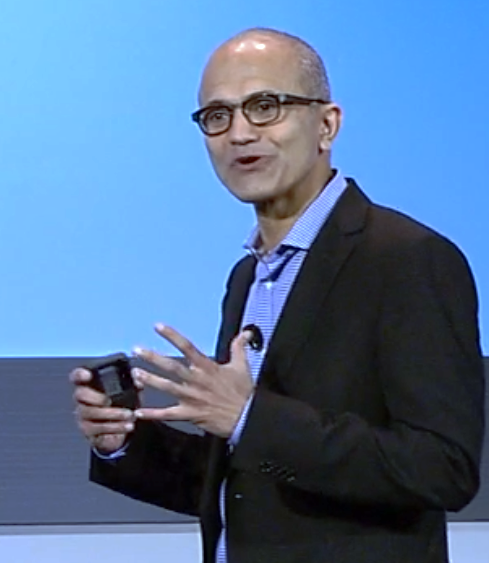
Data ‘Exhaust’ Leads to Ambient Intelligence, Microsoft CEO Says
Microsoft aims to help customers take the “data exhaust” that flows from ubiquitous computing and turn it into ambient intelligence, Microsoft’s new CEO Satya Nadella said today in a webcast on the company’s big data strategy.
 While the phrase “big data” was not uttered very often, it was clear that Nadella, COO Kevin Turner, and other Microsoft executives were on hand to discuss the company’s strategy that pertains to what much of the world thinks of as big data. Nadella prefers the simpler term “data,” which the purists will like.
While the phrase “big data” was not uttered very often, it was clear that Nadella, COO Kevin Turner, and other Microsoft executives were on hand to discuss the company’s strategy that pertains to what much of the world thinks of as big data. Nadella prefers the simpler term “data,” which the purists will like.
“If you look at the world through the lens of data,” Nadella said, “what you see is this constant every increasing data exhaust that comes from ubiquitous computing. You can envision this as logs from servers. It can be data from sensors. It can be social stream data, which is unstructured information. It can even be transactional data that’s happening at an increasing rate. So you have this constant exhaust, and of course that all acts as the fuel for ambient intelligence.”
As Nadella sees it, Microsoft is evolving its “data platform” that will allow customers to take advantage of all this data in as seamless and simple a manner as possible. “We want to take an architectural approach that brings together different products from Excel on one end to SQL Server and Hadoop on the other end,” Nadal said. “These are different products that all have to come together in one cohesive architecture to create this notion of ambient intelligence.”
 |
|
| Microsoft CEO Satya Nadella | |
The Office suite will play a central role in the new data-driven Microsoft. “The key breakthrough for us is how to make it possible to use the tools you use on a daily basis—Office–and yet make the power of data shine through,” Nadella said.
Nadella didn’t disclose many new specifics about how Microsoft intends to help customers capture the data exhaust and transforming it into something that’s useful through Word, Excel, and PowerPoint. Key pieces of the big data platform already in place, including the new in-memory “Hekaton” capabilities of SQL Server 2014, the continued success of its Windows Azure cloud, and of course HDInsights, the Hadoop as a service offering co-developed by partner Hortonworks that runs on Azure.
He did drop one interesting tidbit, however, revolving around machine learning algorithms and potential development Microsoft may be doing there. As customers seek to analyze their unstructured and structured data alike, Hadoop and traditional data warehouses will come closer, he said, and machine learning algorithms will play a bigger role.
“You want to bring together what has been today the two different worlds of parallel data warehouse built on SQL technologies as well as technologies like Haodoop, into one fabric on which you can do analysis and computation,” he said. “This is also a place where we will bring new capabilities around machine leaning over time so you have the same technology fabric for you to be able to do analysis.”
Having the right culture in place is another other critical aspect of having a successful data-oriented organization, Nadella said. “Talking about technology is one thing,” he said. “But if you really as an organization want to change anything, it’s about culture. And when it comes to data and to be able to truly benefit from this platform, you need to have a data culture inside of your organization. To me this is perhaps the most paramount thing inside of Microsoft.”
Microsoft has imbued every aspect of its organization with that data-driven ethos, Nadella says, from the continuous forecasting done in its finance departemetn to the human analytics performed by the HR department to how the real estate team manages facilities.
You can view the entire webcast here.
Related Items:
Can Microsoft Become the McDonald’s of Hadoop?



























